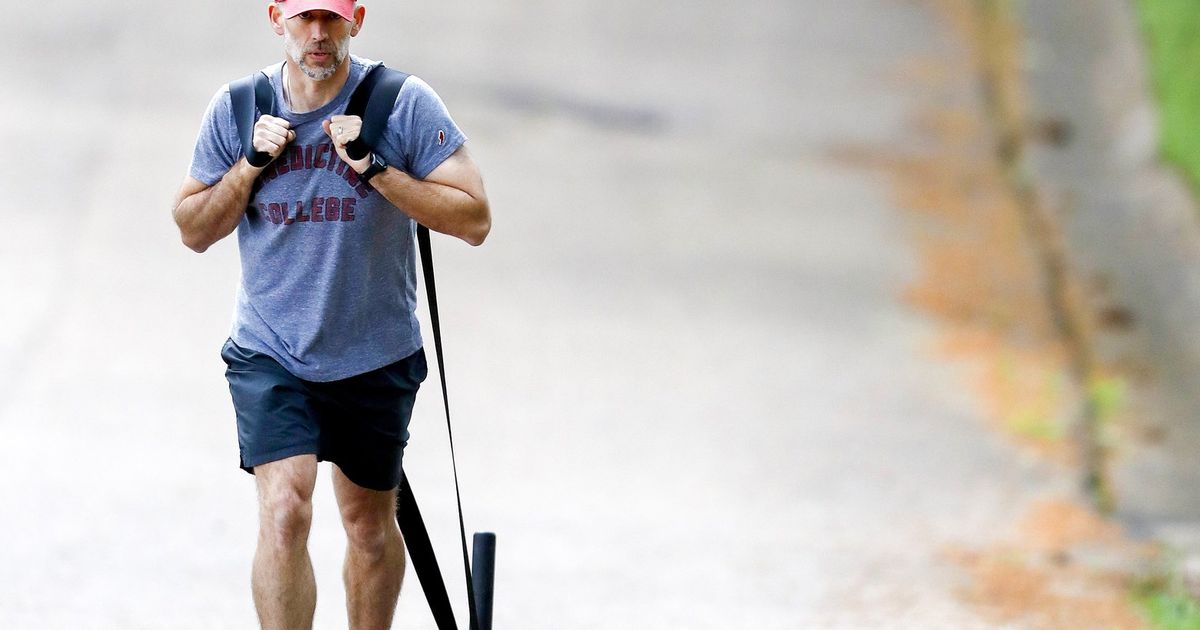on nutrition
The Bone Health & Osteoporosis Foundation estimates that about 54 million Americans have low bone mass, putting them at higher risk for osteoporosis. Genetics, hormone levels, and lifestyle all play a role in the development and progression of osteoporosis, and if you want to reduce your own risk, diet and the right kind of physical activity are the best places to start. But which is the right type?
The bone responds to the stress we put on it, and we need enough stress from physical activity to promote bone growth, but not too much stress, as can happen with excessive exercise. that’s why he The American College of Sports Medicine and other organizations recommend “weight-bearing” activities, but unfortunately those recommendations have not been matched with clear examples. If you always assumed that walking and resistance training (weight lifting) counted as “weight-bearing” activities, what I learned when I attended a session on skeletal health at the annual meeting of the Academy of Nutrition and Dietetics last fall might surprise you. I was surprised too.
Turns out walking is technically bearing weight, after all, you’re bearing your own weight, but while it’s good for your muscles, heart, lungs, and mental health, you’re probably not stressing your bones enough to count. Consider This: Walking Is Good For Your Joints because it is low impact.
Ah… therein lies the problem. Our bones need impact. That excludes swimming (the water supports your weight), bicycling (unless you’re mountain biking on rough, bumpy terrain), and walking (there’s always one foot on the ground, so the impact is only equal to your body weight, which is not enough).
A 2017 position statement from Exercise & Sports Science Australia on physical activity to prevent and control osteoporosis provided clear guidance that had not been available for a long time. Specifically, the activity should provide rapid impacts of at least twice your body weight, and should be progressively more difficult as your fitness improves and your bones adapt.
What does this mean for you?
ESSA’s “exercise prescription” for bone health includes impact, resistance, and balance training, with some modifications based on whether or not someone already has osteoporosis.
Impact training. Running counts, and racket sports are even better. Jumping rope ups the ante even more, but not as much as volleyball and aerobics. The overall impact winner? Gymnastics. Visualize yourself dismounting or jumping on the ground and you will understand why.
If you have steps in your house, you can jump from the bottom step, holding on to the handrails at first if necessary, and then progress by jumping off higher objects. Think of 10 to 150 hits per day, at least three days per week. It’s also important to mix up your impact activity so your bones don’t get used to what you’re doing and stop improving. This includes jumping or hopping in different directions, like when playing pickleball or tennis.
Endurance training. Lifting weights is great for your muscles and can also be good for your bones if the weights are heavy and you’re working hard. The ESSA guideline recommends doing two sessions per week of eight exercises targeting large muscle groups. The goal is two to three sets of each exercise, lifting enough weight that you can only do eight reps. Results from the LIFTMOR (Lifting Intervention For Training Muscle and Osteoporosis Rehabilitation) study demonstrated that supervised high-intensity progressive resistance training (using deadlifts, squats, and overhead presses) can improve bone density in both postmenopausal women and middle-aged and older men with low bone mass.
Many runners are surprised when they get a DEXA scan and discover that their bone density is excellent in the hips and spine, but not in the wrists. Push-ups, starting with your hands against the wall if necessary, help build strong wrists, but once they feel easier you’ll need to increase the challenge. You can go from the wall to a chair, from your knees to your toes, then try to lift your hands off the ground at the top of the pushup.
While some discomfort may be a sign that you’re getting the positive bone stress you’re looking for, it’s important that you don’t injure yourself. If you already have low bone mass, are out of shape, or are new to impact or resistance-based exercise, a physical therapist can help you learn how to do these movements with proper technique so you don’t injure yourself as you gradually get stronger. .
Balance training. Walking heel to toe forward for 10 steps, then back for 10 steps is one idea. When that gets easy, walking on a foam mat or closing your eyes increases the difficulty, as does adding a cognitive element like counting backwards by sevens while doing the physical exercise. Always stay safe, whether that means having someone to watch over you or something solid to hold on to if you need to.
There’s no time like the present
The best time to develop our bones is from childhood to young adulthood. But better late than never. If you know your bone density is already declining (you’re postmenopausal or have been diagnosed with osteopenia or osteoporosis), anything you can do to slow bone loss is a win.
My sister did gymnastics as a child, played volleyball and basketball, and ran track in middle and high school, then went on to run recreationally, so she probably built better bones than I did. However, I started lifting heavy weights in high school and did a lot of aerobics in my teens and 20s, so I feel good about the foundation I laid. But I take nothing for granted. I added push-ups and heavier weights to my resistance training sessions and dusted off my jump rope. While I don’t feel ready to jump off my 15-inch ply box just yet, I’m working from a lower step for now, I’ll make it.
